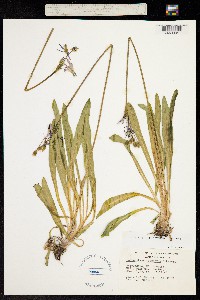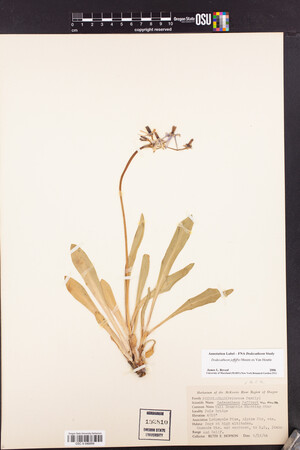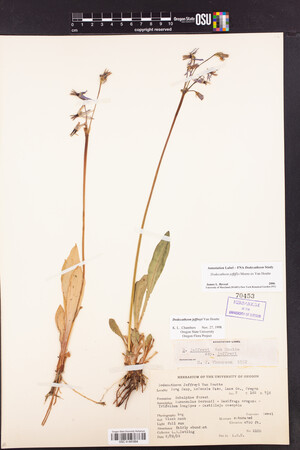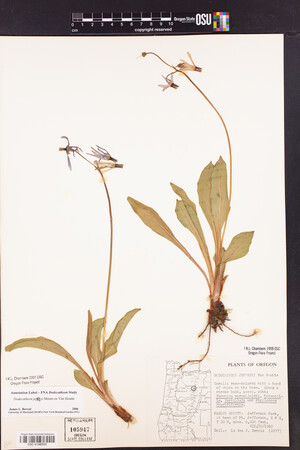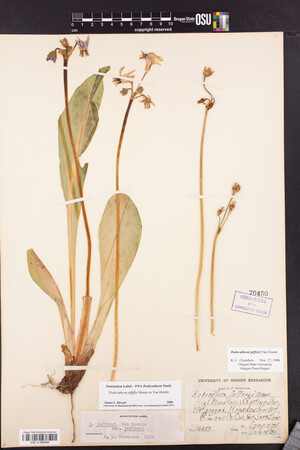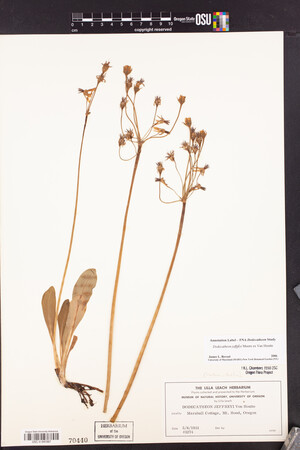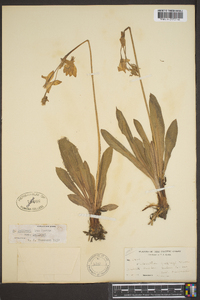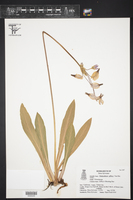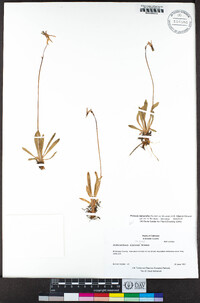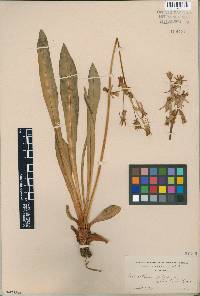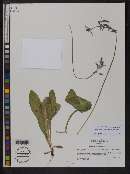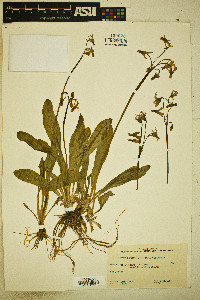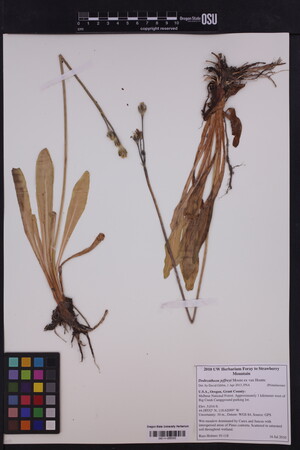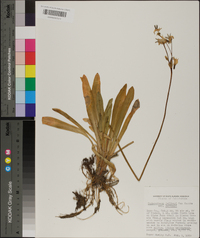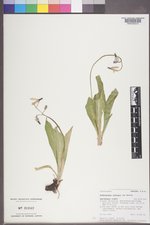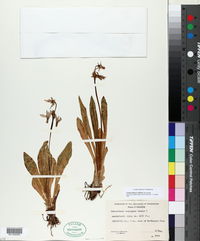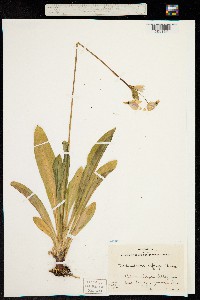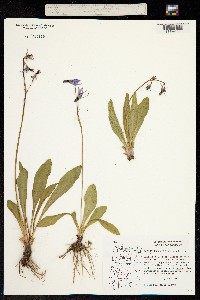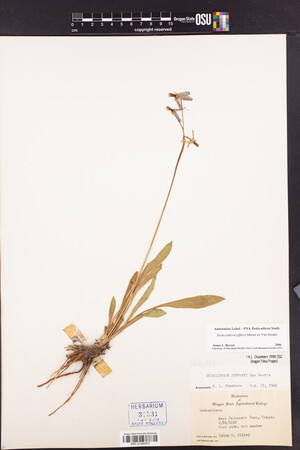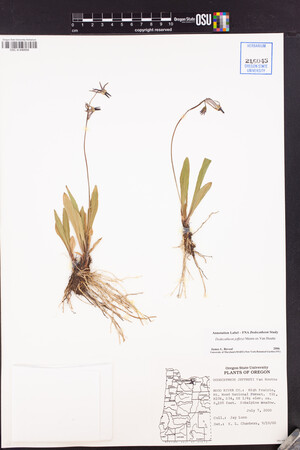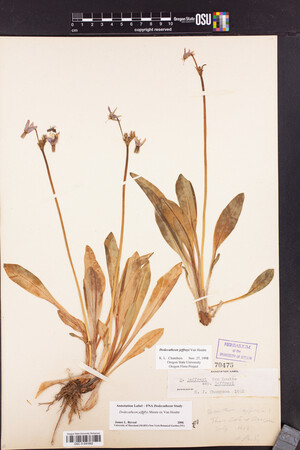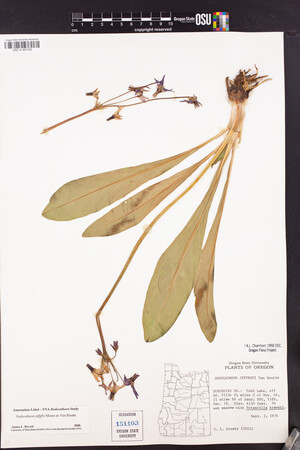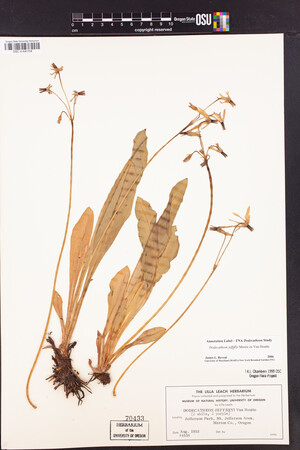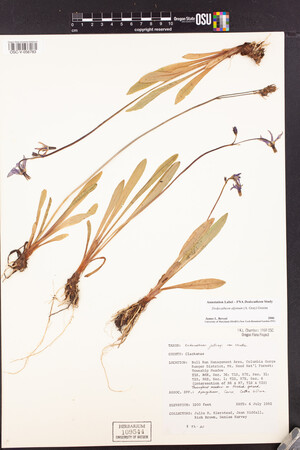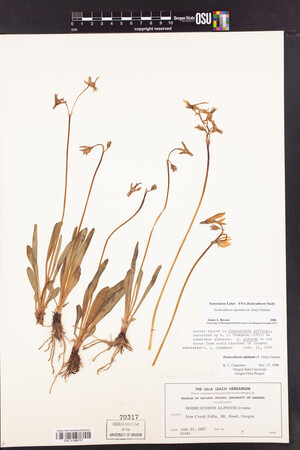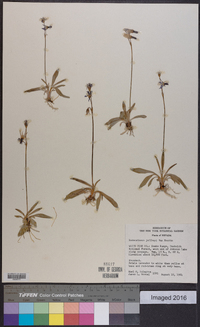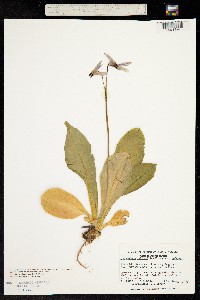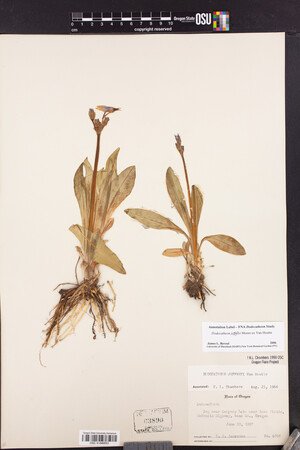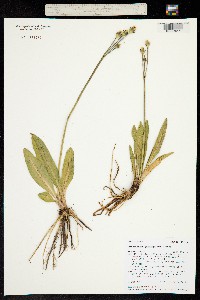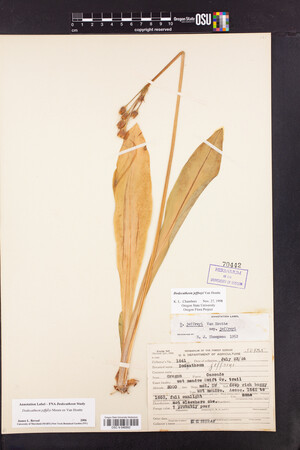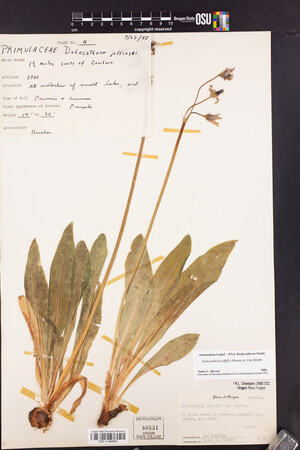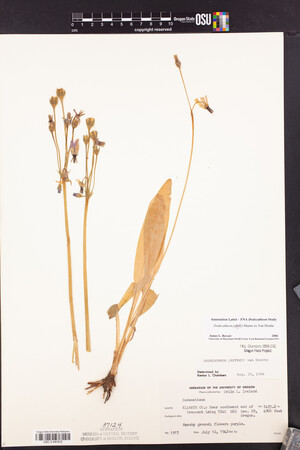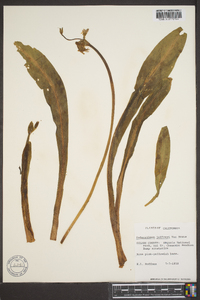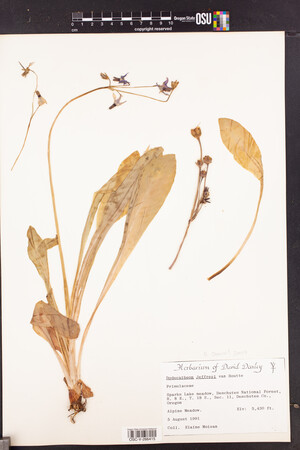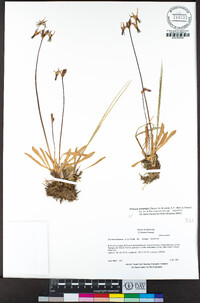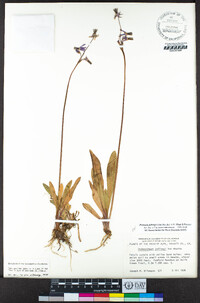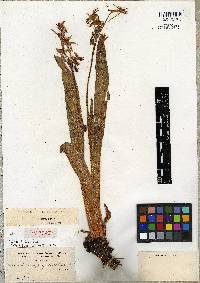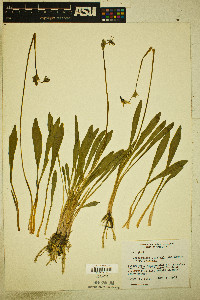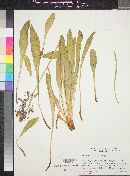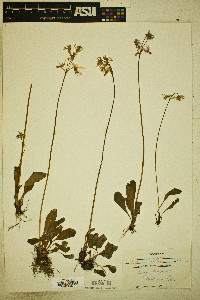
|
|
|
|
Family: Primulaceae
Alpine Shootingstar, more...Tall Mountain Shootingstar
[Dodecatheon dispar, moreDodecatheon exilifolium , Dodecatheon tetrandrum , Primula jeffreyi (Van Houtte) A.R. Mast & Reveal, Primula tetrandra (Suksd.) A.R. Mast & Reveal] |
Plants 10-60(-75) cm; scape glandular-pubescent at least in part, not sticky. Caudices not obvious at anthesis or usually horizontal, relatively short and thick or elongate and slender; roots usually white; bulblets absent. Leaves (2.5-)7-40(-53) × (0.5-)1-6 (-7.5) cm; petiole winged; blade narrowly oblanceolate or oblanceolate to spatulate, base decurrent onto stem, usually gradually tapering to petiole, margins entire or crenate to serrulate, surfaces glabrous or glandular-pubescent. Inflorescences 3-20-flowered; bracts lanceolate to broadly lanceolate, 3-17 mm, glandular-pubescent. Pedicels 2-7 cm, usually glandular-pubescent, rarely glabrous. Flowers: calyx green, 7-12(-15) mm, usually glandular-pubescent, rarely glabrous, tube 2-4 mm, lobes 4-5, 4.5-8(-12) mm; corolla tube cream or (rarely) yellow with reddish to purplish, thin to thick, often wavy ring, ring rarely absent, lobes 4-5, magenta to lavender or light yellow to whitish, 10-25(-27) mm; filaments distinct or partially connate, dark maroon to black, usually 1-1.5 mm; anthers 6.5-11 mm, (apex truncate to obtuse); pollen sacs yellow or maroon, connective purplish, transversely rugose; stigma enlarged, diam. no more than 2 times style. Capsules yellowish tan to reddish brown, operculate or sometimes valvate, sometimes both on same plant, ovoid, 7-11(-15) × 4.5-7(-10) mm, glabrous or teeth sometimes sparsely glandular-puberulent; walls thin, pliable. Seeds with thin membrane along edges. 2n = 42, 44, 66, 86. Flowering summer. Dry to moist stream banks, lake shores, bogs, slopes, and meadows mainly in montane conifer woodlands; 0-3000 m; B.C.; Alaska, Calif., Idaho, Mont., Oreg., Wash., Wyo. Dodecatheon jeffreyi is found in montane places in the Sierra Nevada of California and western Nevada and on the northern coastal ranges and Siskiyou Mountains of northern California and southwestern Oregon. It occurs in the Cascade Ranges of Oregon, Washington, and British Columbia northward to the Kenai Peninsula region of south-central Alaska, often near the coast and especially on the off-shore islands. It is also widely scattered in the mountains of northeastern Oregon, central and northern Idaho, and western Montana, with isolated stations on the Olympic Peninsula of Washington. A single collection (J. Major 2927, GTNP) from Moose Basin, Grand Teton National Park, is the only record from Wyoming. Dodecatheon jeffreyi is usually readily recognized; in portions of California, the delimitation of it from both D. alpinum and D. redolens can be somewhat arbitrary. Whether this is a breakdown of species boundaries due to hybridization or a shift in their respective morphologies due to overlapping ecological settings is uncertain. In some instances, intermediate plants seem to occur in areas where two of the species occur in proximity. In general, the corolla tube of D. jeffreyi is white except near the ring, where it is yellow. In D. redolens, the entire corolla tube is yellow. This species is known universally as Dodecatheon jeffreyi, although it was named a year earlier as D. jeffreyanum K. Koch. To avoid the introduction of a name that has never been used for this widespread and sometimes cultivated plant, D. jeffreyanum has been proposed for rejection (J. F. Veldkamp et al. 2008).
|
This project was made possible in part by the Institute of Museum and Library Services [MG-70-19-0057-19].
Powered by Symbiota


